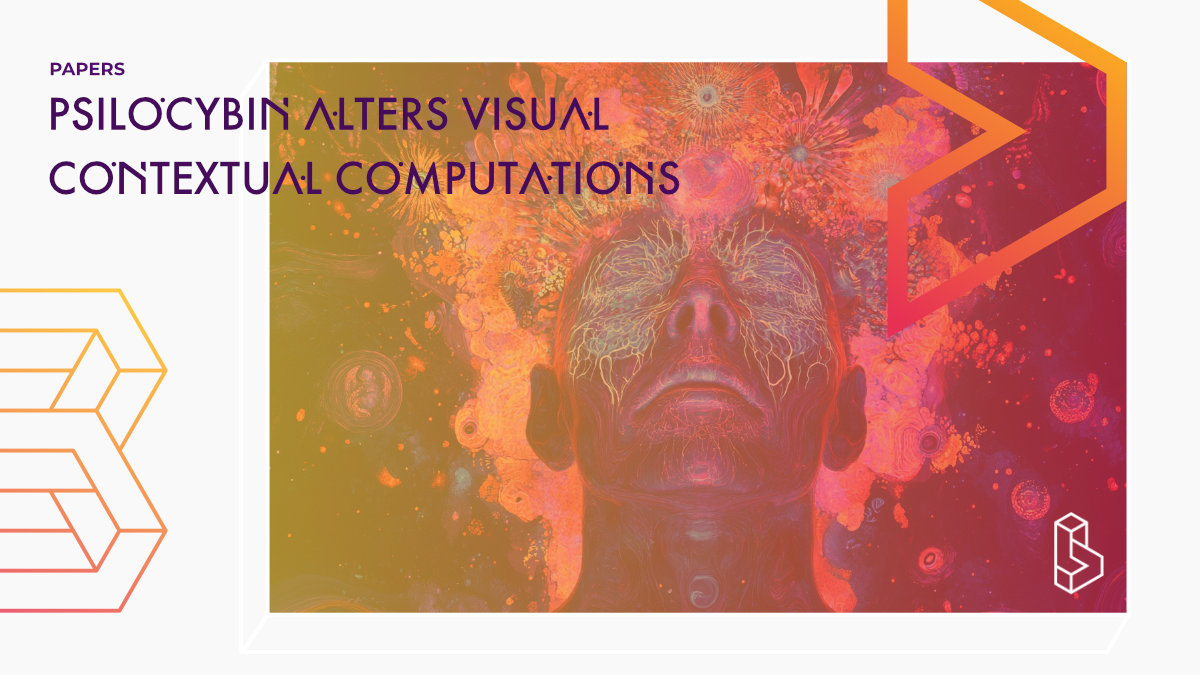This pre-print, multimodal study (n=18) investigates psilocybin’s (5mg and 10mg) effects on perception and brain dynamics using psychophysics, ultra-high field fMRI, and computational modelling. It finds that psilocybin alters contextual perception in the Ebbinghaus illusion, modifies cortical responses to visual stimuli, and proposes a computational model linking these changes, suggesting altered contextual computations as a potential general mechanism of psychedelic action.
Abstract of Psilocybin alters visual contextual computations
“Psilocybin alters perception and brain dynamics. Contextual computations are ubiquitous in the brain. Here, we investigate the effects of psilocybin using psychophysics, ultra-high field functional MRI, and computational modeling. We find that 1) psilocybin alters contextual perception in the Ebbinghaus illusion, 2) psilocybin alters contextual modulation in cortical responses to visual stimuli, and 3) we propose a computational model capable of capturing and linking these changes. Leveraging vision as a beachhead, our findings highlight the alteration of contextual computations as a potential general mechanism underlying psychedelic action.“
Authors: Marco Aqil, Gilles de Hollander, Nina Vreugdenhil, Tomas Knapen & Serge O. Dumoulin
Summary of Psilocybin alters visual contextual computations
Contextual processing is fundamental to human perception, allowing individuals to interpret sensory stimuli relative to their environment. For example, the Ebbinghaus illusion demonstrates how surrounding context can alter the perceived size of a central object. Psychedelics like psilocybin are known to induce profound changes in perception, often leading to altered interpretations of sensory inputs. However, the underlying mechanisms by which psilocybin affects contextual processing remain unclear. This study seeks to bridge this gap by investigating the effects of psilocybin on contextual perception and associated brain dynamics.
Methods
Participants
The study involved a group of healthy adult volunteers who met specific inclusion criteria, such as no history of psychiatric disorders and no current use of medications that could interfere with the study. Participants provided informed consent and were screened for medical and psychological suitability.
Experimental Design
The researchers employed a within-subjects design, meaning each participant underwent both the psilocybin and placebo conditions on separate occasions. This approach allowed for direct comparisons of the effects of psilocybin versus placebo within the same individuals.
Psilocybin Administration
Find this paper
Psilocybin alters visual contextual computations
https://doi.org/10.1101/2025.02.06.636848
Open Access | Google Scholar | Backup | 🕊
Cite this paper (APA)
Aqil, M., de Hollander, G., Vreugdenhil, N., Knapen, T., & Dumoulin, S. O. (2025). Psilocybin alters visual-contextual computations. bioRxiv, 2025-02.
Study details
Compounds studied
Psilocybin
Placebo
Topics studied
Neuroscience
Healthy Subjects
Study characteristics
Original
Placebo-Controlled
Double-Blind
Within-Subject
Randomized
Bio/Neuro
Participants
18
Humans
Compound Details
The psychedelics given at which dose and how many times
Psilocybin 5 - 10mg | 2x

